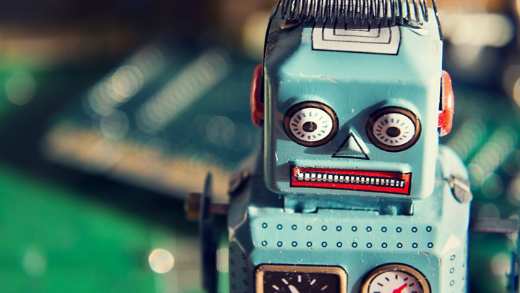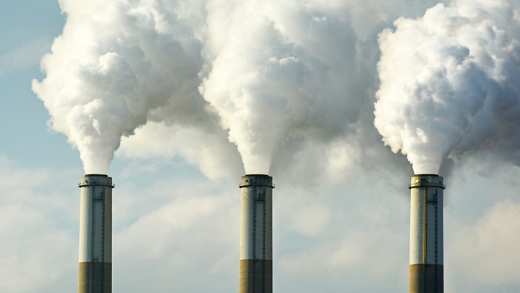Read this article to understand:
- What we mean by the circular economy and why investors should care
- Why, if pursued by consumers, companies and countries, circular solutions could have a big part to play in tackling the climate crisis and other environmental and social issues
- The opportunities and risks presented by the circular economy in key sectors such as electronics, autos, food and fashion
This iconic photo of the Blue Marble was taken on December 7, 1972, during the Apollo 17 expedition. It was the first time we were able to see the Earth in its entirety and for what it really is: a finite, sphere-shaped planet.

Source: NASA, photo taken by Bill Anders on December 24, 1968
A few years before, in 1966, British economist Kenneth E. Boulding published his essay “The Economics of the coming Spaceship Earth,” in which he approached the idea of circularity – defending the so-called “spaceman economy” against the “cowboy economy”. The idea of the cowboy economy refers to how cowboys behaved in the Wild West – settling somewhere, exhausting all the resources and moving on to repeat the process. Conversely, spacemen cannot throw away any waste and need to recycle what they have – even urine is transformed into water!
Unfortunately, too many of us still behave like cowboys. Across the globe, most consumption still follows a straight line – the so-called “take-make-waste” economy – where products are made, sold and thrown away. But the toll on the planet is too high to be ignored; the level of natural resources we use is greater than what the planet can sustainably support and there is no planet B for when all the resources are exhausted. In short, we need to move from a linear economic model to a more circular one and start behaving like astronauts.
In this article, we look at what a circular economy means for different sectors, the power of renting and what can be done to drive circularity forward.
Waste not, want not
Tim Cooper, professor of sustainable design and consumption at Nottingham Trent University, began using the term circular economy in a 1994 report, Beyond Recycling, which argued that longer product lifetimes were necessary alongside increased recycling. The term has gained popularity in the last few years, particularly after the European Union initiated its Circular Economy Action Plan1 in 2015.
We need a clearer conceptualisation of what is meant by a sustainable economy
“There has been growing recognition of the need to link economic change with the material world and to have a clearer conceptualisation of what is meant by a sustainable economy,” explains Cooper, who attended the launch of the EU’s plan. “It was clear at that meeting a transformation in thinking was happening.”
The aim of a circular economy is to eliminate waste and keep resources in use as long as possible to decrease the extraction of new raw materials and energy usage.
There are many ways to do this. The main ones are reuse, repair and remanufacture, and recycling (as shown in Figure 1). But there are other things individuals, companies and countries can do, such as reducing consumption, eliminating unnecessary materials, refurbishing, using sustainable packaging and using energy more efficiently. Companies could also start to rethink business models and the design, production and delivery of products (for instance, manufacturing products that are easily dissembled and repaired).
Figure 1: Linear economy versus circular economy

Source: Aviva Investors, December 2021
According to the 2021 Circularity Gap Report,2 even if all countries fulfil their Paris Agreement pledges, temperatures might still rise by 3.2 degrees Celsius (above pre-industrial levels) by 2100 – well above the 1.5 – two degrees target. However, according to the report, if the world becomes just 17 per cent circular – double the number it is now (currently 8.9 per cent) – emissions could be slashed by almost 40 per cent and resource use by 28 per cent versus current trajectories. This would put the world on a two degrees path by 2032 and net zero by 2050.
Figure 2 shows that, under the current scenario, we will likely reach 60 billion tonnes of greenhouse gas (GHG) emissions by 2030. Full adoption of the NDCs (Nationally Determined Contributions set in the Paris Agreement)3 would reduce this to 56 billion tonnes. However, if the EU roadmap is implemented, this could come down to 33.2 billion tonnes by 2044. In short, the NDCs could represent 15 per cent of the solution, whereas the roadmap can deliver the additional 85 per cent.
Figure 2: The development for material extraction (mass) in billion tonnes (Gt) and GHG emissions in carbon dioxide equivalent, 1900 to 2019 and projected to 2050

Source: Circularity gap report, 20214
E-waste: From deleterious to useful
Electronic waste (e-waste) has become the world’s fastest-growing waste stream,5 as the rapid pace of technological advances and growing consumer demand translates into more devices reaching the end of their life after only a couple years of use.
According to Global E-waste Monitor,6 we generate about three to four per cent more waste each year. In 2019, we reached a record high of 53.6 million metric, or mega, tonnes (Mt) across the world – the equivalent of 7.3kg per capita, largely concentrated in wealthier nations. People in Northern Europe produce the most e-waste (22.4kg per person), followed by Australia and New Zealand (21.3kg), and the US and Canada (20.9kg). Averages across Asia and Africa were much lower (5.6kg and 2.5kg respectively).
Figure 3: E-waste generation per capita (kg)

Source: Aviva Investors, December 2021. Data from Global E-waste Monitor, 20207
Two points are worth highlighting. Firstly, e-waste contains precious metals like gold, silver, platinum and palladium (which the report gives a value of $57 billion). And secondly, it also encompasses hazardous substances such as mercury and cadmium, which pose severe risks to human health and the environment (see Figure 2). Only 17 per cent of e-waste is recycled, while the rest is dumped or incinerated – up to 95 per cent of those emissions are caused by production.
Figure 4: Effects of e-waste
Landfills
E-waste in landfills can leak harmful toxins into the ground and air.
Illnesses
Once breathed in or ingested, they can cause serious illnesses.
Children
Children have been known to suffer from memory and cardiovascular issues.
Adults
Adults can experience effects on liver function and sperm quality.
Source: Global E-waste Monito, 20208 and Aviva Investors, December 2021
According to researchers from McMaster University in Canada, smartphones are the biggest culprits when it comes to e-waste. Emission figures have soared from 17Mt of CO2e per year in 2010 to 125Mt in 2020 – an increase of around 630 per cent.
The average British adult has around £598 worth of unused gadgets.9 The first task is persuading consumers to think more deeply about their consumption patterns and to find ways of keeping items in use for longer, potentially partnering with third parties to recycle or refurbish old devices or components.
In the UK, for example, Mazuma Mobile pays for used iPhones and refurbishes them to sell on, while iMend repairs iPhones at home or work. Meanwhile, Fairphone, a company that started with the idea of selling an ethical phone, is now engaged in the circular economy. It has developed a way for customers to repair their own phones and upgrade components instead of throwing them away.
Apple has developed a robot called ‘Daisy’ that disassembles iPhones to extract and recycle 14 minerals, including lithium.10 It is estimated four robots can get through two hundred iPhones per hour, while components like the logic board and camera are sent to specialist recyclers to recover cobalt, tin and tungsten.
US technology conglomerate Cisco signed the PACE Capital Equipment Pledge11 in 2018, committing to take back used equipment at no cost for any customer upon request and offering repair for all products to extend their lifespan and minimise obsolescence.12 Other businesses that have signed the pledge include Philips, Dell Technologies and Enel Group.
Another example is HPE.13 Figure 5 shows the impact of refurbishing and recycling in terms of CO2 and energy saved and the amount of waste kept from landfill.
Figure 5: Savings achieved by HPE
3,688mt CO2e saved
Average annual CO2e of 802 cars
13,380MWh energy saved
Average annual energy consumption of 27,015 households
11,549 moving boxes
Which equates to 340mt of waste kept from landfills
Source: Aviva Investors, December 2021. Data from HPE Circular Economy Report, 2020
Repurposing food waste
Food waste is another major issue, with over $1 trillion wasted worldwide and almost a third of food produced never eaten. To put this in context, if food waste were a country, it would be the third largest emitter of GHGs after China and the USA.14
The current food system doesn’t work, with uneaten food accounting for 25 per cent of all fresh water usage globally. The social costs are huge: while nearly ten per cent of the world’s population go hungry, we continue to throw way food.15
Worse still, when food waste goes to landfill, it decomposes and creates methane, which, as Figure 6 shows, is 28 times more powerful than CO2 at warming the planet over a 100-year timescale and more than 80 times more powerful over 20 years. Since the Industrial Revolution, methane concentration in the atmosphere has more than doubled, and about 20 per cent of global warming can be attributed to this gas.16
Figure 6: Strength of greenhouse gases (molecules of CO2)

Source: Environmental Protection Agency17
Although these figures are alarming, they also represent a commercial opportunity. Making the food system circular would prevent waste, for example redistributing surplus edible food to people who need it most and using food by-products or waste to create new products. An app called Olio allows people to collect edible food that is about to expire from supermarkets, restaurants, and households for free.
Making the food system circular would prevent waste, redistributing surplus food to people who need it most
Rick Stathers, senior ESG analyst and climate specialist at Aviva Investors, believes the ideal solution would be not wasting food in the first place. When that is not possible, turning it to compost and catching the methane generated in landfill and using it as energy source for generating electricity or heat could be better. Most landfill content is organic matter (food scraps, yard trimmings, junk wood, wastepaper) and the biogas they produce can be managed relatively simply: sending tubes down into a landfill’s depths that collect gas, which is piped to a central collection area where it can be vented or flared. Better still, it can be compressed and purified for use as fuel in generators, garbage trucks, or mixed into the natural gas supply.
Reducing food waste can also make businesses more efficient. After all, unsold produce does not make economic sense. Crisps company Walkers has embraced this mindset by capturing CO2 from beer fermentation and mixing it with potato waste to turn it into fertiliser for use on fields to feed the following year’s potato crop. This is estimated to slash CO2 emissions from its manufacturing process by 70 per cent.18
Other examples of circular solutions are emerging, too. A research paper, published in the Brazilian Journal of Operations & Production Management, argued sweet potato waste could be used to create ethanol and alcohol-based hand sanitizer.19 Other studies are looking at the secondary products created in the production of palm oil – such as palm oil mill effluent, empty fruit bunches, palm oil mill sludge, oil palm fronds, oil palm trunks, decanter cake, seed shells and palm-pressed fibres.
The waste stream is now in so much demand, it is a commodity in its own righ
“The palm oil mill effluent is used by NESTE in the creation of sustainable aviation fuel,” adds Stathers. “The waste stream is now in so much demand, it is a commodity in its own right – which could be a good thing, if it was guaranteed not to link to further deforestation for palm oil plantations.”
Elsewhere, the UK-based food waste management company Winnow is helping close the loop on food waste in commercial kitchens. In essence, food is discarded in designated bins, the waste is then logged from the scale beneath the bin and the food type is captured – this data is aggregated to provide powerful insight for chefs. According to its website, its technology has reduced food waste by 50 per cent on average across 100 sites and customers typically save between three and eight per cent on food costs.
The auto industry
Cars and other vehicles are responsible for around a fifth of total global CO2 emissions (20 per cent of which is attributable to the production phase alone) and are a major consumer of natural resources – including 80 per cent of global rubber demand, a quarter of all aluminium and about 15 per cent of the steel market.20 According to EIT Climate-KIC, cars are also responsible for 90 per cent of air pollution in cities and contain 1.4 tonnes of material on average.
The adoption of circular economy practices has the potential to reduce carbon emissions by up to 75 per cent
The adoption of circular economy practices, combined with electrification, has the potential to reduce carbon emissions in the industry by up to 75 per cent and non-circular resource consumption by up to 80 per cent per mile by 2030.21 The Circular Cars Initiative, launched at the UN Climate Action Summit,22 is comprised of three main workstreams: design for longevity through sharing and pooling concepts, improved materials management and advanced re-manufacturing.
In particular, the materials workstream is focused on the urgent need to decarbonise, introduce closed-loop recycling and provide materials with a productive second life – capturing value that today is downcycled into other industries (see Figure 7).
Figure 7: Decarbonising the car

Source: World Economic Forum, 202023
The business model workstream lays out a series of strategies for achieving circularity. It has developed a taxonomy to guide the industry’s progress on carbon and resource efficiency, with the goal to maximise the mobility output achieved per unit of resources and emissions expended (see Figure 8).
Figure 8: The five levels of circularity

Source: World Economic Forum, 202024
Renault is seen as a leader for circular solutions in the automotive industry. Back in 2008, it created a specialised subsidiary to take control of waste materials and parts, recycling copper, steel, aluminium and plastics from vehicles. More than a third of new vehicles are made from recycled materials, while one of its plants outside Paris refurbishes tens of thousands of engines and gearboxes each year, delivering energy, water and chemical savings of 80 per cent and generating more than $500 million in revenues for the company annually.25
Ford and McDonalds are partnering to upcycle the fast-food chain’s coffee bean waste into reinforced plastic car parts
Meanwhile, in the US, Ford and McDonalds (two companies that on the face of it have little in common) are partnering to upcycle the fast-food chain’s coffee bean waste into reinforced plastic car parts.26 In essence, the dried skin of a coffee bean that naturally falls off during the roasting process can be converted into a durable material to reinforce certain vehicle parts. Ford has also used soy-based foam in its cushions since 2011 and waste from wheat, coconuts, tomatoes and other plants in its cars.27 Meanwhile, Jaguar Land Rover’s Reality Aluminium project”28 uses aluminium waste from household appliances and end-of-life vehicles in the development of new vehicles.
Electric batteries are a particularly thorny issue. As they are expensive and carbon-intensive to produce, viewing them as a component-as-a-service might make sense. Instead of owning their battery, vehicle owners might pay for electricity and battery use by subscription or mileage. This approach has been widely adopted in China by companies like NIO. Ample, a San Francisco-based start-up, has invented a platform that delivers a full charge to any electric car in minutes using autonomous robotics and smart-battery technology. Its “pods” can absorb energy from the grid when it is cheap – particularly from low-carbon sources - and dispense it faster than costlier fast-charge systems.
Fashion: Owning less is good
The environmental and social effects of fast fashion have been well-documented. Figure 9 shows that the clothes purchased by the average UK citizen cumulatively weigh 26.7kg, almost double that of supposedly more fashion-conscious Italians.
Figure 9: New clothes bought in Europe (kg)

Source: Aviva Investors, December 2021. Data from European Clothing Action Plan, 201829
According to UK charity Waste & Resources Action Programme (WRAP), £140 million worth of clothing ends up in landfill or is burnt each year, while less than one per cent of fibres used to make garments are recycled into new clothing.30 Companies across the garment supply chain could cut their carbon, water and waste impact by three to ten per cent if they made clothes that last just three and nine months longer.
However, there are some positive signs emerging. For example, WRAP commissioned Cooper and his team at Nottingham Trent University to prepare an industry protocol to help designers and manufacturers create longer-lasting garments. Meanwhile, younger generations appear far more committed to sustainability – online marketplaces such as Vinted, Poshmark and Depop specialise in second-hand clothes and target a growing market of millennials and Gen Zers. The second-hand market is projected to double in the next five years, reaching $77 billion – as Figure 10 shows - and twice as big as fast fashion (at about $84 billion) by 2025.
Figure 10: The growth of the second-hand market ($bn)
Source: thredUP, 202131
The thredUP Resale Report suggests that if everyone in North America bought one used instead of new item of clothing, it would save over 200,000 tonnes of waste and 2.6 million tonnes of carbon dioxide – the equivalent of taking half a million cars off the road for a year.32
Many young people nowadays buy second-hand clothes. The culture is changing
“Many young people nowadays buy second-hand clothes, whereas previously it would have been an activity mainly undertaken by the elderly or the very poor. The culture is changing,” says Cooper. But while we do the right thing by handing down unwanted clothes to other people, we still have the problem that many items end up in landfill, particularly those made of mixed fibres. As such, Cooper says it is important to drive technological change towards a world where goods are more easily recyclable.
Companies such as M&S and H&M have also introduced take-back schemes. M&S has been running “Shwopping” in conjunction with Oxfam, while H&M has an in-store network of take-back points that allow the company to collect more than 29,000 tonnes of used clothing last year, surpassing its goal to collect at least 25,000 tonnes a year.33
H&M and its charitable foundation have invested in a range of promising recycling technologies, but these are yet to reach scale. Many challenges remain, such as separating fibre blends in textiles and ensuring recycled fibres maintain their original properties. IKEA, GAP, Adidas and H&M are among the signatories to the Textile Exchange’s recycled polyester commitment for members to grow their use of the recycled plastic by 25 per cent by 2020 – a target they exceeded.
Rentals as a solution/Stuff-as-a-service
Linked to this is the notion of renting stuff instead of owning it. This concept is getting traction across a range of industries, from furniture and cars to jeans and music, and is the logic behind increasingly popular platforms like New York-based company Rent the Runway, UK-based Girl Meets Dress, or China’s Y Closet.
An interesting case study is Netherlands-based MUD Jeans and its attempt to slow down the fast-fashion industry by leasing jeans for a monthly fee. Its jeans are made with reuse, repair and recycling in mind (this means they are often as simple and “mono-material” as possible) and utilising techniques that recycle water and cut harmful chemicals. Consumers return them at the end of use and, if still wearable, jeans are upcycled and sold again (as shown in Figure 11).
Figure 11: Mud Jeans’ business model

Source: MUD Jeans, 202134
“We are starting to see business models changing and a few companies are moving away from the concept of ownership to leasing, which can improve efficiency enormously,” says Cooper. However, these business models don’t work for every situation. For example, while no one is likely to rent jumpers used daily, they might rent expensive suits or dresses for special occasions.
Thinking about products in terms of lifetime usage can be revealing
Thinking about products in terms of lifetime usage can be revealing. According to the Edinburgh Tool Library, the average power drill gets used for 13 minutes during its life, while the RAC estimates the average car is in use just four per cent of the time. DIY tools are a prime candidate for the sharing economy and companies like B&Q have started rental schemes. Also, more community-based sharing among peers, friends and neighbours could be a way to maximise the useful life of a product.
Equally, carmakers like Renault and Volkswagen have launched electric car-sharing schemes in densely populated cities like Berlin, Paris and Madrid. Renault already leases its electric vehicle batteries to customers: these can be reused in renewable energy distribution networks as well as in offices and industry, and eventually Renault says all the material components will be recycled.
However, Cooper believes rental schemes only work if they make economic sense for customers. “For example, one of the UK’s leading department stores recently introduced a furniture rental scheme, but it is so expensive that consumers could have bought the products after two years for a similar sum.”
Another potential barrier is that some people cannot afford credit, so the notion of products-as-a-service will have cashflow implications and credit risks.
Circular solutions
In a strange irony, the solutions to fostering a more circular economy are also circular – involving critical feedback loops between governments, companies and consumers. With younger demographics at the forefront pushing for change, new societal norms are emerging thanks to nudges, incentives and education.
At the same time, there are complications in getting consumers to change behaviours. One major blocker is that people’s worldview tends to be short term and consumerism can, to some people at least, provide happiness. Also, companies want to produce goods that people want to buy, so it is important people ‘vote’ with their wallets.
If something costs twice as much but lasts three times as long, it’s good value for money
“Unfortunately, when consumers can choose between buying a longer-lasting washing machine that is energy efficient and recyclable but will cost £600, and one that doesn’t last as long but costs £250, most will buy the cheaper one,” says Cooper. “But this could be a false economy. People have competing short-term financial pressures and often fail to understand the cost-per-service concept. It’s important to get this message across to customers. If something costs twice as much but lasts three times as long, it’s good value for money.”
Another way to push circularity is through corporate leadership, since this tends to drive different industries. Ikea, for example, is engaging with its customers by offering workshops in upcycling and repairing products, cutting waste and even growing food at its London store in Greenwich.
Additionally, systemic changes, technologies and infrastructure are needed to motivate people to do the right thing. “It’s not easy to recycle small appliances. I went to Belgium 25 years ago and they did household collections. We still don’t do this in the UK, even now. So, there are infrastructure issues we need to solve,” says Cooper.
Trust in the recycling process is also crucial. “Many consumers are influenced by negative stories regarding our domestic waste that claim households might carefully separate their waste, but it all ends up in an incinerator or gets shipped to other countries. These issues need to be addressed,” adds Cooper.
Outdated attitudes toward gender do not help either – there are still many young men and women who don’t know how to repair clothes and other products. Education can have an important role in making people more equipped to make products last longer.
“The solution is blending together consumer solutions and technologies and having the confidence to do the right thing to drive the circular economy forward,” says Cooper.
The bottom line
“Why is it still cheaper to throw something away than repurposing or recycling it? From a financial perspective, why waste by-products? It doesn’t make economic sense. What is wrong in the financial models that prevent that happening?” asks Stathers. Indeed, being more efficient with resources should drive outperformance. According to the Ellen MacArthur Foundation, the circular economy offers huge economic benefits: some €500 billion over ten years in Europe alone.
Government policies and investments have a critical role in driving circular solutions. Some policies are already taking shape: the most recent iteration of the EU’s circular economy package includes revised targets on recycling, a binding landfill target and an EU-wide strategy for plastics, including a target to eliminate single-use plastics. An eco-design directive means circularity principles must be embedded in product design.
EU policy could potentially have ripple effects across the globe
EU policy could potentially have ripple effects across the globe. From 2021, product designers will have to think about disassembly and repair, so that key spare parts can be replaced by professionals without causing damage, and with tools that are common and not proprietary. However, there are caveats. For example, manufacturers will be allowed to bundle parts in such a way that it may not be cheaper to repair the one small worn item.
ING, alongside public and private sector partners, is working to develop a European accelerator programme to make the business case for circularity and connect supply-chain partners. Netherlands-based Floow2 has developed an asset-sharing platform for businesses to share equipment and services.
As for attempts to export waste to poorer countries, despite China’s ban on the import of waste, developed economies have found other takers. Malaysia is one of the largest importers of waste, but the country’s infrastructure is overwhelmed, with dumping and burning increasing. Creating a circular economy must therefore mean taking responsibility for our own waste.
Stathers believes the doughnut economic model offers useful guidance on how we should pursue a more circular economy (see Figure 12). “The economy has to function between these two constraints (environment and social). We need to rethink economic and business models to build a more prosperous planet.
Figure 12: The doughnut economic model

Source: University of Cambridge, March 201535
“We are a wasteful species, and at a point where our consumption and human population is putting pressure on the planetary system and it cannot be sustained,” he adds. “It’s pushing back against these pressures and we are seeing cracks in the system occurring that will undermine the stability of humanity and the economic models it supports. We have the wisdom to fix these issues, all we need is the will.”


















